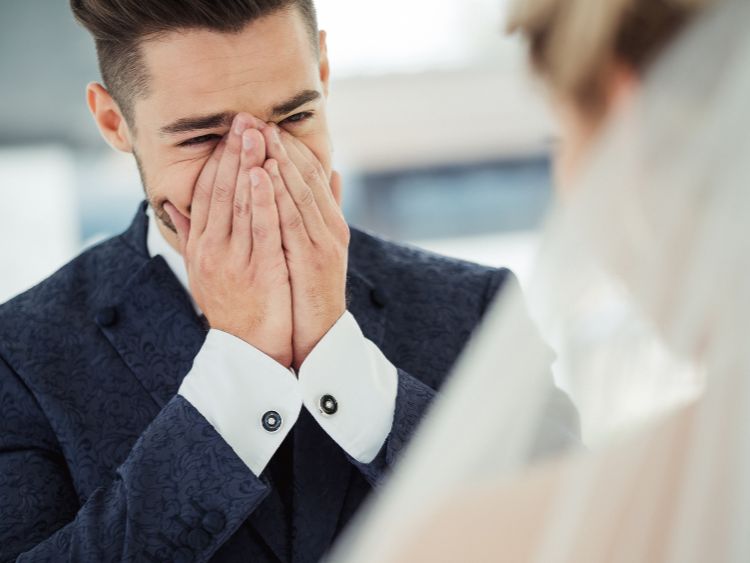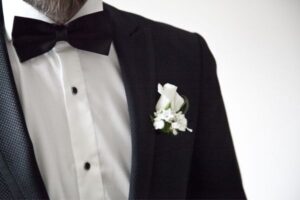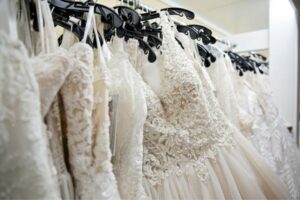Men’s Formal Attire: The Definitive Guide to Looking Sharp
When it comes to dressing for success, men’s formal attire plays a crucial role in making a lasting impression. Whether you’re attending a job interview, a wedding, or a formal dinner, your outfit speaks volumes about your personality and attention to detail. But with so many options available, choosing the right attire can be overwhelming. Don’t worry, though—this guide will help you navigate the world of men’s formal wear with ease and confidence. We’ll cover everything from the essential pieces to the subtle nuances that make an outfit truly stand out.
The Foundations of Men’s Formal Attire
The Suit: The Cornerstone of Formal Wear
A well-fitted suit is the cornerstone of men’s formal attire. It’s essential to invest in a suit that not only fits well but also complements your body type and personal style. The most common types of suits include:
- Single-breasted suits: These are the most versatile and can be worn for almost any formal occasion. They feature a single row of buttons and a narrow overlap of fabric.
- Double-breasted suits: These suits offer a more traditional and formal look, with two rows of buttons and a wider overlap of fabric. They’re ideal for making a bold statement.
When selecting a suit, pay close attention to the fit. A well-tailored suit should hug your shoulders, taper at the waist, and provide enough room to move comfortably. The length of the jacket should cover your buttocks, and the sleeves should end just above your wrists, allowing about half an inch of your shirt cuff to show.
The Shirt: The Unsung Hero of Formal Attire
While the suit takes center stage, the shirt is equally important in men’s formal attire. A crisp, well-fitted dress shirt can elevate your entire look. Here are a few key points to consider:
- Fabric: Opt for high-quality fabrics like cotton or a cotton blend, which offer breathability and comfort.
- Color: White and light blue are classic choices that pair well with almost any suit. However, don’t shy away from experimenting with subtle patterns or colors that complement your suit.
- Fit: Like the suit, the shirt should fit well without being too tight. The collar should be snug but not constricting, and the sleeves should end at your wrist bone.
The Tie: The Finishing Touch
The tie is the perfect accessory to add a pop of personality to your formal attire. Whether you prefer a bold pattern or a classic solid color, the tie should complement your suit and shirt without overpowering them. Here are a few tips:
- Width: The width of the tie should match the lapels of your suit jacket. Skinny ties pair well with slim lapels, while wider ties suit broader lapels.
- Knot: The type of knot you choose can change the entire look of your outfit. A simple four-in-hand knot is versatile and easy to tie, while a Windsor knot offers a more formal and symmetrical appearance.
The Shoes: Completing the Look
No formal outfit is complete without the right pair of shoes. When it comes to men’s formal attire, the most popular choices are:
- Oxfords: These are the epitome of classic formal footwear, featuring closed lacing and a sleek design. Black Oxfords are a must-have for any formal event.
- Derbies: Similar to Oxfords but with open lacing, Derbies offer a slightly more casual look while still being appropriate for formal occasions.
- Loafers: For a more modern and relaxed look, loafers can be worn with or without socks. They’re versatile and can be dressed up or down depending on the occasion.
Accessories That Elevate Men’s Formal Attire
Cufflinks: Small Details, Big Impact
Cufflinks are a subtle yet powerful accessory that can add a touch of elegance to your formal attire. They’re typically worn with French cuff shirts and come in various styles, from classic metal designs to more elaborate and personalized options.
Pocket Squares: A Dash of Flair
A pocket square is a small piece of fabric that adds a dash of color and texture to your suit. While it’s not essential, a pocket square can elevate your look, making it appear more polished and refined. The key is to choose a pocket square that complements your tie and shirt without matching them exactly.
Belts and Suspenders: Functional and Fashionable
Belts and suspenders are both practical and stylish accessories that can help complete your formal look. A well-chosen belt should match the color of your shoes, while suspenders offer a vintage charm that’s perfect for more traditional outfits.
Watches: Timeless Elegance
A classic watch is the ultimate accessory for men’s formal attire. Whether you opt for a leather strap or a metal bracelet, your watch should be understated and elegant, complementing rather than overpowering your outfit.
Dressing for Different Formal Occasions
Job Interviews: First Impressions Matter
When dressing for a job interview, it’s important to strike the right balance between professionalism and personal style. A well-tailored suit in a neutral color like navy or charcoal is always a safe choice. Pair it with a crisp white shirt, a subtle tie, and polished Oxfords to create a look that’s both confident and approachable.
Weddings: Celebrating in Style
Weddings are a time to celebrate, and your outfit should reflect the joyous occasion. While the level of formality may vary depending on the event, a dark suit paired with a white or light-colored shirt and a tie that complements the wedding’s color scheme is a foolproof option. Don’t forget to add a pocket square for a touch of flair!
Formal Dinners and Galas: Timeless Elegance
For black-tie events, nothing beats the sophistication of a tuxedo. A classic black tuxedo paired with a white dress shirt, a black bow tie, and patent leather shoes is the epitome of formal elegance. If the event calls for a white-tie dress code, upgrade to a tailcoat, a white bow tie, and a formal white waistcoat.
Common Mistakes to Avoid in Men’s Formal Attire
Poor Fit: The Ultimate Faux Pas
One of the most common mistakes men make when it comes to formal attire is wearing ill-fitting clothes. A suit that’s too big or too small can ruin your entire look, no matter how expensive or stylish the pieces are. Always opt for a tailored fit, and don’t be afraid to visit a tailor to make adjustments as needed.
Overloading on Accessories: Less Is More
While accessories can enhance your outfit, overloading on them can have the opposite effect. Stick to one or two statement pieces, such as a tie and a pocket square, and avoid wearing too many rings, bracelets, or other accessories that can make your outfit look cluttered.
Ignoring the Dress Code: Follow the Rules
Dress codes exist for a reason, and ignoring them can make you stand out for all the wrong reasons. Whether it’s a black-tie event, a business casual meeting, or a wedding with a specific theme, always make sure your outfit aligns with the dress code.
FAQs About Men’s Formal Attire
Q: How should I choose the right suit for my body type?
A: When selecting a suit, consider your body shape. For example, if you have a broader build, opt for a suit with structured shoulders and a slim waist to create a balanced silhouette. If you’re on the slimmer side, a suit with a bit more padding in the shoulders can add some definition.
Q: Can I wear a black suit to a wedding?
A: While black suits are traditionally reserved for funerals and very formal events, they can be worn to weddings, especially if the event is in the evening or has a formal dress code. However, navy or charcoal suits are more versatile and appropriate for most weddings.
Q: What color shoes should I wear with a navy suit?
A: Brown shoes, particularly in a darker shade, pair beautifully with a navy suit. They add warmth to the outfit and create a sophisticated look. Black shoes are also an option for a more traditional and formal appearance.
Q: How do I tie a Windsor knot?
A: The Windsor knot is a classic and formal tie knot that’s perfect for wide-collared shirts. To tie it, start with the wide end of the tie on your right and the narrow end on your left. Cross the wide end over the narrow end, bring it up through the loop, and pull it down. Then, wrap the wide end around the back of the narrow end, bring it up through the loop again, and pull it down through the knot in front. Tighten and adjust the knot until it’s centered.
Q: Is it okay to skip the tie?
A: Skipping the tie is acceptable in certain situations, particularly in business casual settings or less formal events. However, if the occasion calls for formal attire, it’s best to wear a tie to maintain a polished and professional appearance.
Conclusion: Mastering Men’s Formal Attire
Mastering men’s formal attire is all about understanding the basics and adding your personal touch. From choosing the right suit to selecting the perfect accessories, every detail matters. Remember, confidence is key—when you feel good in what you’re wearing, it shows. So go ahead, embrace the art of dressing well, and make every formal occasion an opportunity to shine.
Authoritative Links for Further Reading
- Men’s Formal Wear Guide: https://www.artofmanliness.com/articles/mens-formalwear-the-complete-guide/
- How to Choose the Right Suit: https://www.gq.com/story/how-to-buy-a-suit
- Tying a Windsor Knot: https://www.realmenrealstyle.com/tie-windsor-knot/
- Matching Shoes with Suits: https://www.themodestman.com/match-shoes-suits/
This comprehensive guide should provide valuable insights to your readers while aligning with your expertise and SEO requirements.



